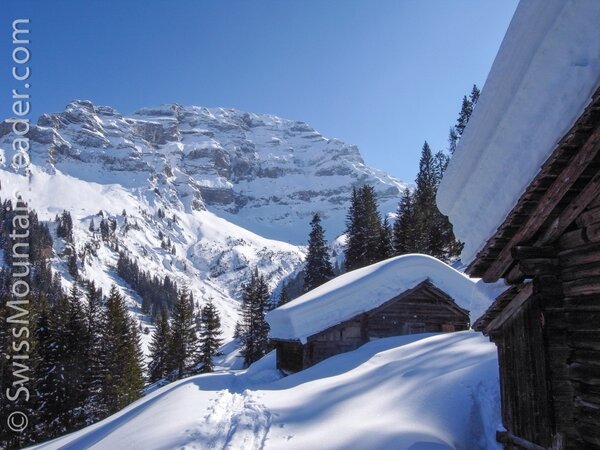These are good questions, it’s just made me re-read the bulletin and the language is odd. I’m just on the way out but I looked at the local bulletin and a couple from the Valais. There’s certainly mention of a buried weak layers but it is qualified by saying it’s shallow snow packs. In fact, here’s what one says
Avalanches can in very isolated cases be released in deep layers, especially in areas where the snow cover is rather shallow as well as in areas close to the tree line
I’d say that could leave people scratching their head a bit, how can there be a deep layer in a shallow snowpack? I think they’re using deep to mean lower which explains that.
This is a good example of how shallow snow packs are often more dangerous than deep snow packs. It’s certainly due to a big temperature gradient which is often the nature of shallow packs, given a ground temperature around zero, an air temperature of -10 then the gradient must always be higher where the snow is shallower. Basically the cold air is pulling water vapour up through the snow pack forming faceting in lower layers. This isn’t a fixed situation, if the temperature gradient improves the snow will restructure again.
Worst case is sustained cold weather, day after day, where nothing is halting or reversing the faceting process. Around here, at this height, that’s not occurring of course, we’re getting warm days which slows or halts that. At the obvious expense of some moisture dropping down into the snowpack to lubricate sliding layers. Which, like you say is causing some releases on sunny slopes. By and large that’s fairly safe, mostly people don’t get hurt by slides on south faces like that because they’re fairly predictable.
There’s some cloud here today which is going to have an warming effect, now heat radiating from the snowpack is being reflected back at it which is increasing the overall snowpack temperature and restructuring some snow. In fact, it’s going to be quite a marked effect today, the cloud is thin enough to let solar radiation in but thick enough to bounce it back. How do you know when that’s the case? My rule of thumb is if it’s cloudy and I still need dark sunglasses then we’re in that situation.
Quite good really, I’ve a had a couple of days off, I’m only doing a half day today but from tomorrow it’s everyday for a while and I like the look of the snow conditions because they’re not going to restrict my route choices much. And, fairly normal this time of year, sunny days, overnight temperatures down to -10 is all pretty standard for mid-Feb.
probably forgot something crucial there but I’ve got to go.


